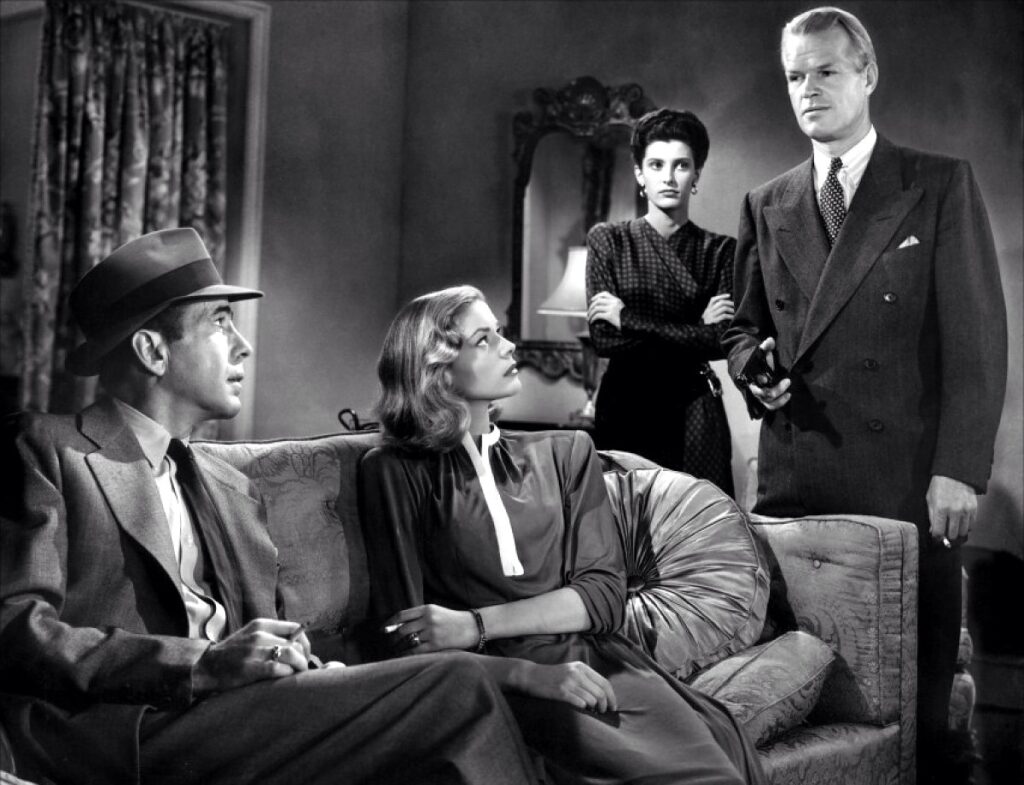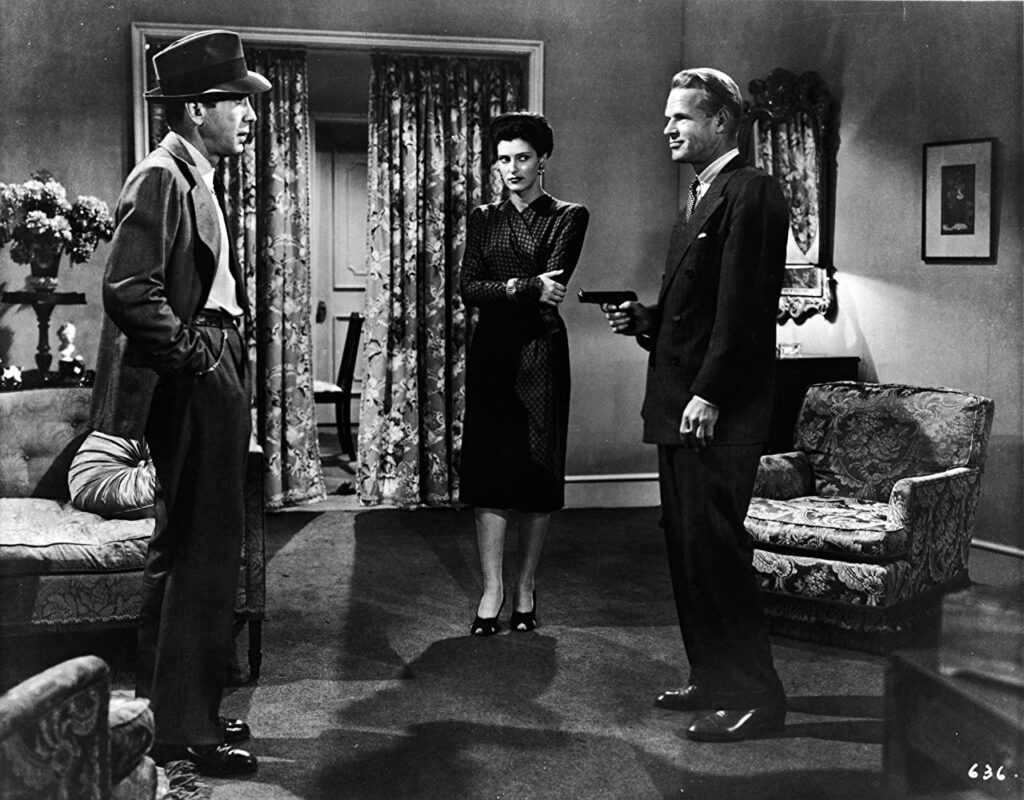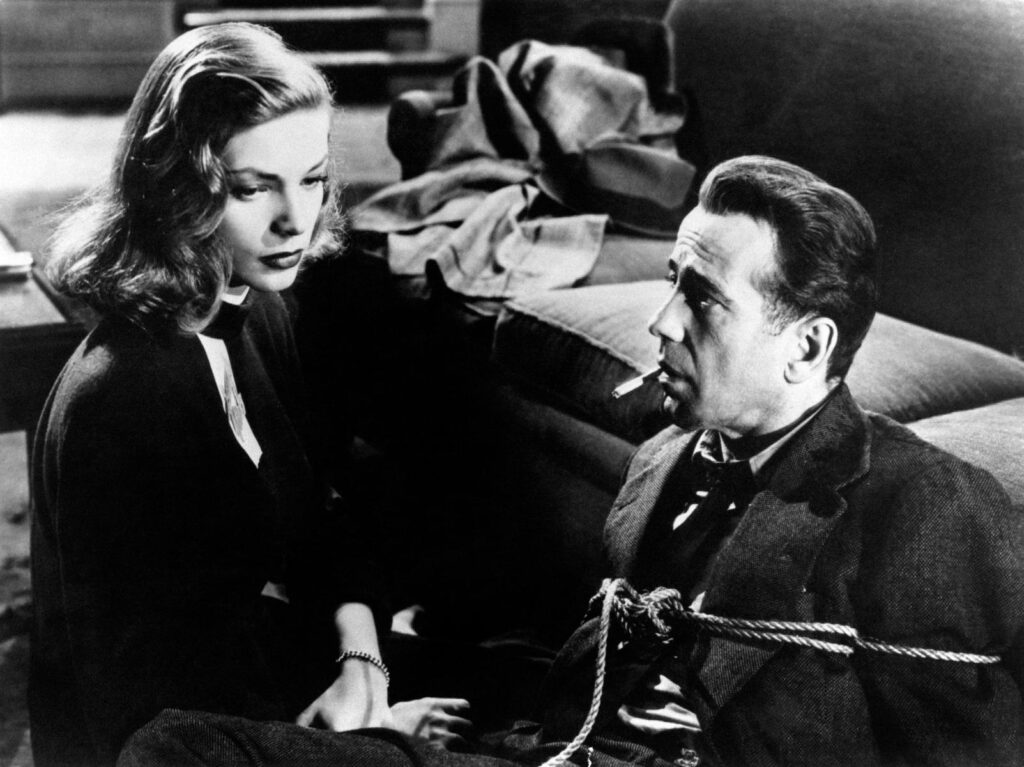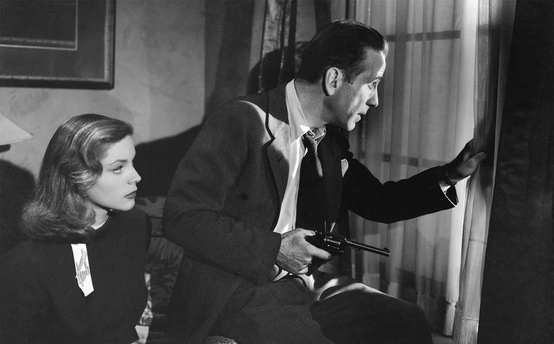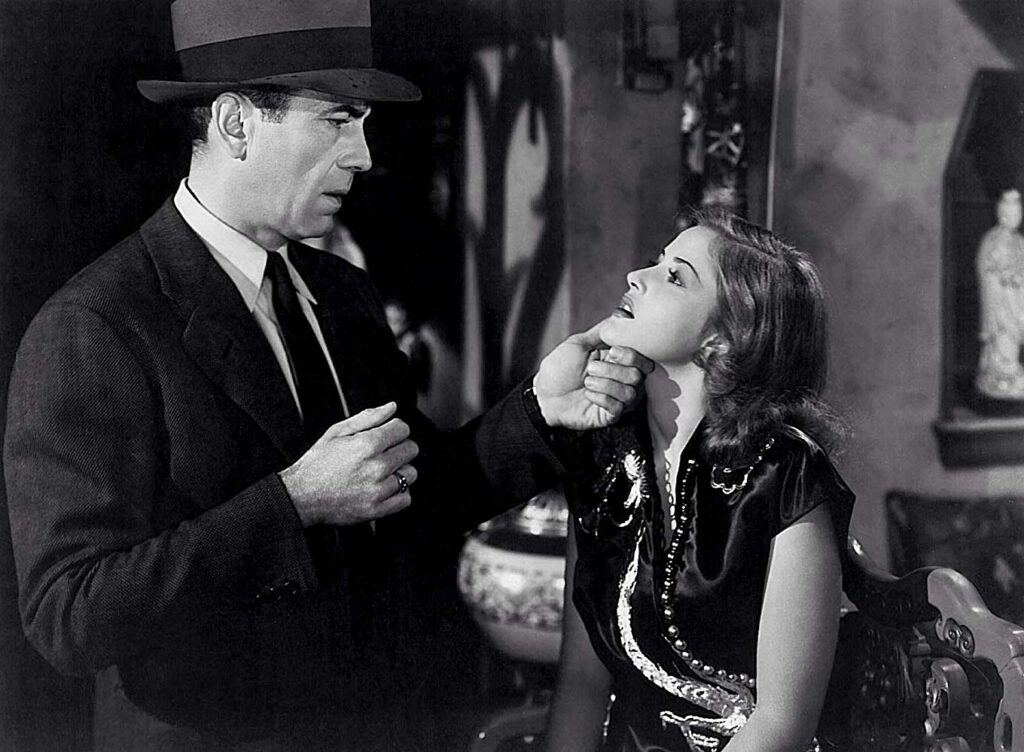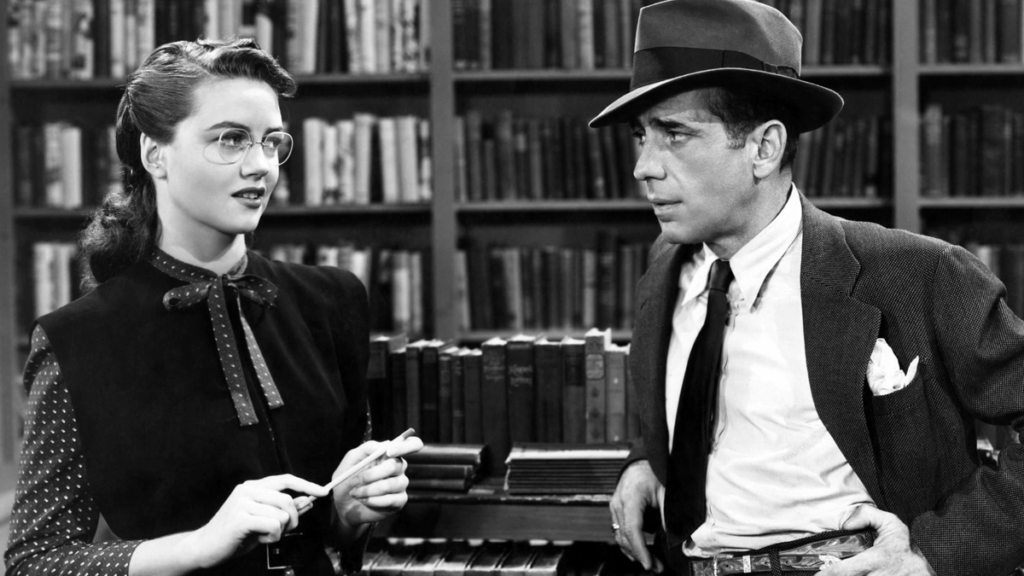Writing
The Big Sleep is known for its convoluted plot. Similar to To Have and Have Not, there was no finalized script during filming due to the constant changes during production. The composition of the screenplay involved Hawks and three writers. Leigh Brackett and William Faulkner wrote alternating sections of the initial draft before exiting once they turned in their final draft. Jules Furthman and Hawks rewrote during production to help appease censorship from the Hays Office, which was vehement about excluding sexual themes.
In the novel, Geiger is selling pornography – then illegal and often associated with organized crime – and is a homosexual having a relationship with Lundgren. Carmen is described as being nude in Geiger’s house and later nude and in Marlowe’s bed. The sexual orientation of Geiger and Lundgren goes unmentioned in the film because explicit references to homosexuality were prohibited. Carmen’s sexuality from the novel also became more thinly veiled. To pass the censorship Carmen had to be fully dressed and the pornographic elements could only be alluded to with cryptic references to photographs of Carmen wearing a «Chinese dress» and sitting in a «Chinese chair». A scene of her in Marlowe’s bed was replaced with a scene in which she appears sitting fully dressed in Marlowe’s apartment, for him to promptly kick her out. This scene was initially omitted from the 1945 cut, but restored for the 1946 version. Midway through filming, Hawks and the cast realized that they did not know whether the chauffeur Owen Taylor had killed himself or was murdered. A cable was sent to Chandler, who told his friend Jamie Hamilton in a March 21, 1949 letter: «They sent me a wire … asking me, and dammit I didn’t know either».
Casting
Nina Foch had tested for the screen role of Carmen. Hawks cast Vickers in the role after seeing a modeling photo of her. He worked with Vickers closely on the role of Carmen and later convinced Warner Bros. to buy out her contract with Universal. Sonia Darrin was cast in the role of Agnes. Hawks did not like her initial screen test but after supervising her makeup and wardrobe for another test, he cast her in the part. Her credit in the movie’s credits was removed when Warner Bros. studio head Jack L. Warner got into a feud with her agent Arthur Pine following the film’s completion.[citation needed]
Production
Principal photography on the film took place on the Warner Bros. backlot from October 10, 1944, to January 12, 1945. Filming was meant to be completed in late November, but was continually delayed due to Bogart’s increased drinking. He was in the process of ending his tumultuous marriage to his wife Mayo Methot following his affair with Bacall during To Have and Have Not. As a result of his drinking and abuse from Methot,[citation needed] Bogart was unable to work for several days. When Jack Warner heard that in spite of this the cast was getting along, he sent this ribbing memo:
Post-production
Although post-production ended in March 1945, The Big Sleep was delayed by Warner Bros. until they had turned out a backlog of war-related films. Because the war was ending, the studio feared the public might lose interest in the films, while The Big Sleep‘s subject was timeless. However, there are several indications of the film’s wartime production, such as the female taxi driver who picks up Marlowe in one scene, with many traditionally male occupations being taken up by women following the draft. Wartime rationing also influences the film: dead bodies are called «red points», which referred to wartime meat rationing and Marlowe’s car has a «B» gasoline rationing sticker in the lower passenger-side window, indicating he is essential to the war effort and therefore allowed eight gallons of gasoline per week.
Soon after completing The Big Sleep, Bogart divorced Mayo Methot and married Bacall in May 1945. In June, Bacall began filming for her first film without Bogart, Confidential Agent. The film, released in November 1945, was deemed a critical and commercial disappointment, with Bacall’s acting panned by critics. To capitalize on the «Bogie and Bacall» phenomenon that had developed, Bacall’s agent Charles K. Feldman asked the studio to re-shoot scenes for The Big Sleep. Warner agreed, and these scenes were shot in early January 1946. Julius Epstein wrote the reshoots, but he was not given a credit.
Although only about twenty minutes of the film’s original 1945 cut was removed and replaced, twenty minutes was either condensed, altered, or eliminated with new footage. For example, in the 1945 cut, Marlowe explores Geiger’s house, where he doesn’t in the 1946 release. A new sequence of Marlowe and Vivian meeting in a restaurant was also added, replacing a ten-minute sequence of them meeting at the District Attorney’s office, and Vivian coming to Marlowe’s office a second time. A number of actors from the first cut did not appear in the second cut. Pat Clark was initially cast as Mona Mars. However, Clark was unavailable when her scenes were reshot in January 1946. Peggy Knudsen was cast to replace her. James Flavin and Thomas E. Jackson were cast as Police Captain Cronjager and District Attorney Wade. However, they did not appear in the 1946 cut of the film when their scene – set in the District Attorney’s office – was removed.
1997 release of the 1945 original cut
In the mid-1990s, the original 1945 cut was found in the UCLA Film and Television Archive. It was discovered that this version had been released to the military to show to troops in the South Pacific. Upon learning of this, numerous benefactors, such as American magazine publisher Hugh Hefner and Turner Classic Movies, raised the money to pay for its restoration. The original version of The Big Sleep was released in art-house cinemas in 1997 for a short exhibition run along with a comparative documentary about the cinematic and content differences between the 1945 cut and 1946 release.
